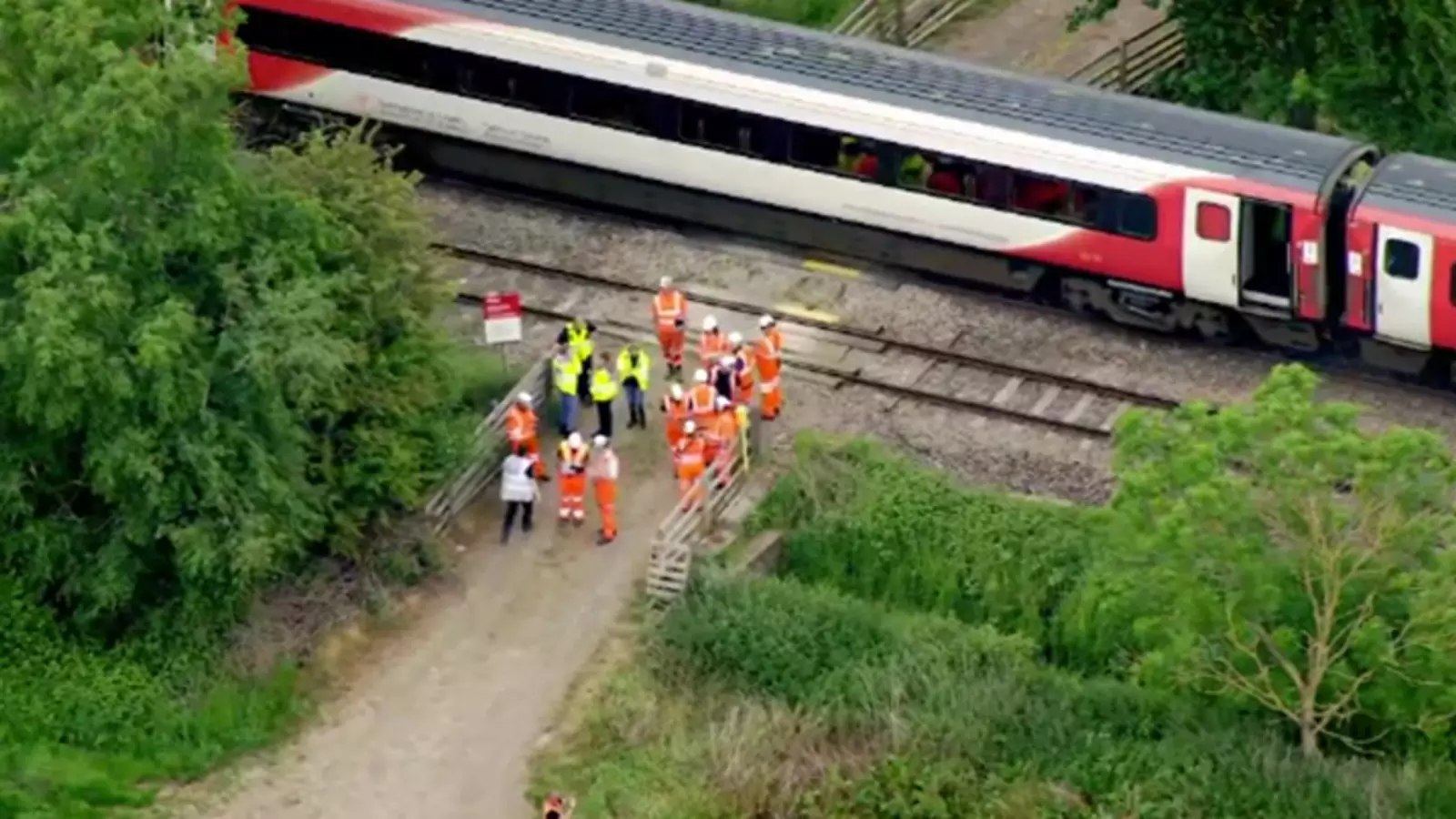In a harrowing incident that has shook the small community north of Leominster, Herefordshire, a train plowed into an agricultural trailer at a level crossing, leaving over a dozen people injured. Such dangerous intersections where road meets rail have long been an issue of public concern, feeding into broader conversations about transport safety. How many more accidents must occur before we shift from complacency to action? This recent catastrophe reveals the disturbing reality that many of these crossings remain inadequately monitored, relying heavily on human intervention, which can be prone to error.
Inadequate Safety Measures and Human Error
The British Transport Police have reported that a 32-year-old man from Bromyard has been arrested on suspicion of compromising railway safety. While it is essential to ascertain individual culpability, we must also scrutinize the conditions that allow such risky situations to proliferate. User-operated level crossings feel like a tragic throwback in an era where technology offers far safer alternatives. The pressing question is: why are we still depending on the fallible nature of human decision-making in such high-stakes environments?
The Rail Accident Investigation Branch (RAIB) has dispatched inspectors to analyze the accident’s circumstances, but will the inquiry address the root causes, or merely investigate the immediate aftermath? The fact that an agricultural trailer could be in proximity to a train point to systemic flaws in our transport infrastructure. It is imperative that both railway operators and government bodies acknowledge that safety should not be an afterthought.
The Human Cost of Complacency
The human toll of this accident is painfully evident, with both a male passenger and a female commuter sustaining injuries. While these injuries are not considered life-threatening, the psychological scars could linger far longer. The trauma experienced by passengers, as well as those who witnessed the collision, has the potential to ripple through communities, raising alarms about the sufficiency of mental health support available in after-incident care. Are we equipped to handle the emotional fallout of such disasters?
Moreover, train services have come to a grinding halt between Hereford and Craven Arms, inflicting further disruption on a public already burdened by a fragile transport network. Replacement road services are being rolled out, but the delays and inconveniences are indicative of a failing system that prioritizes cost-cutting measures over robust safety protocols. Clearly, the economic implications of accidents, combined with downtrodden public trust in railway systems, could snowball into a larger national crisis.
A Call for Reform: Safety Above All
It is high time that we demand comprehensive safety reforms, starting at the level crossings that continue to imperil lives. The lessons from such accidents must not be forgotten; they should transform into actionable plans to safeguard our communities. Transport authorities must establish rigorous guidelines for level crossings, with an emphasis on technological interventions. High-tech solutions like sensors and automatic warning systems could greatly reduce reliance on human judgment and, in turn, prevent further tragedies.
As we grapple with the fallout of this recent collision, one thing is crystal clear: the intersection of agriculture, transport, and human safety cannot be left to chance. The time for complacency has passed; we owe it to the injured, the affected communities, and future generations to advocate for a transport paradigm that prioritizes indisputable safety over unfounded ease.



Leave a Reply